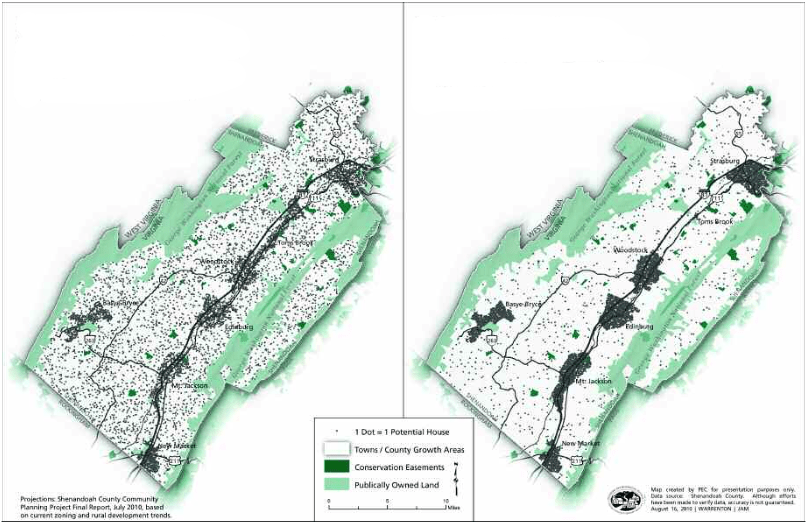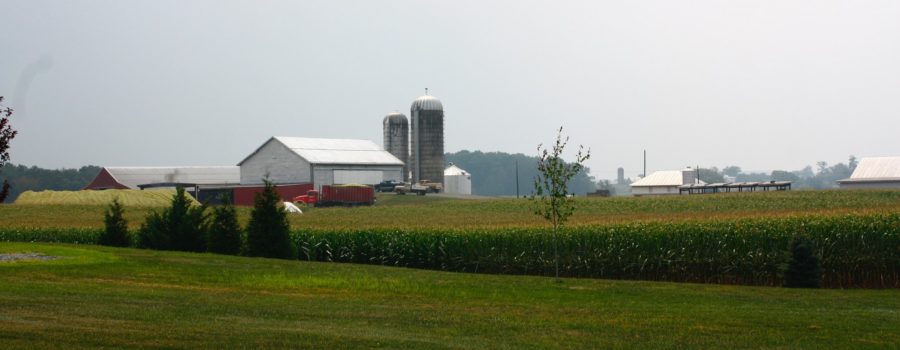At a presentation at the Shenandoah County Government Center in May 2007, Dr. Mike Chandler (featured in our Summer 2020 newsletter) outlined significant inconsistencies between the community’s vision, with its emphasis on fostering a thriving agricultural economy and a rural landscape dotted with distinctive small towns, and the county’s zoning, which allowed extensive residential development, incompatible within the rural landscapes.
Dr. Chandler said a first step toward addressing this disconnect between citizens’ vision and the ordinance was to identify the changes that are likely to occur within the community and then to balance the response with the community’s vision.
So, that is what county officials decided to do. It wasn’t a fast process. It took almost two years. But, it was inclusive with stakeholders from throughout the community and elected officials involved. And, it was comprehensive. It looked long-term and tried to address the concerns and questions raised.

Before the zoning update (left), the county could have seen a loss of more than a quarter of prime farmland to housing and the addition of up to 40,000 new lots in the next 40 years.
In December 2010, the county implemented a number of new actions and modifications to move us toward achieving our vision and managing development in ways that benefit both rural landowners and the taxpayers. The zoning update directed most new residential growth to the areas in and around the existing towns, which keeps the cost of providing public services lower while also promoting agricultural vitality and farmland preservation.
Now a decade later, we continue to see the benefits of planning that helps retain the county’s rural character, preserve natural and historic resources, and allows for compatible residential and business growth and development.

